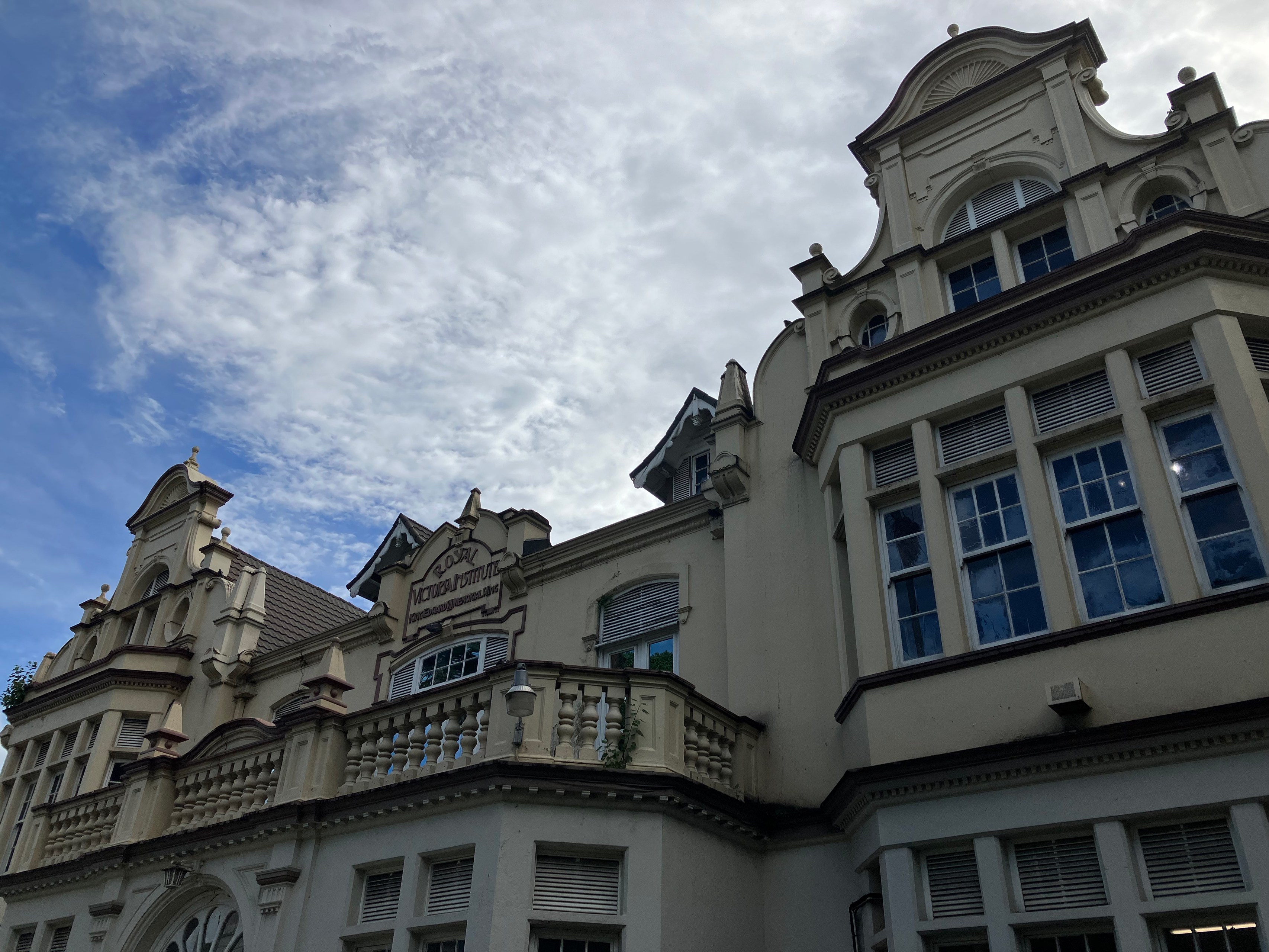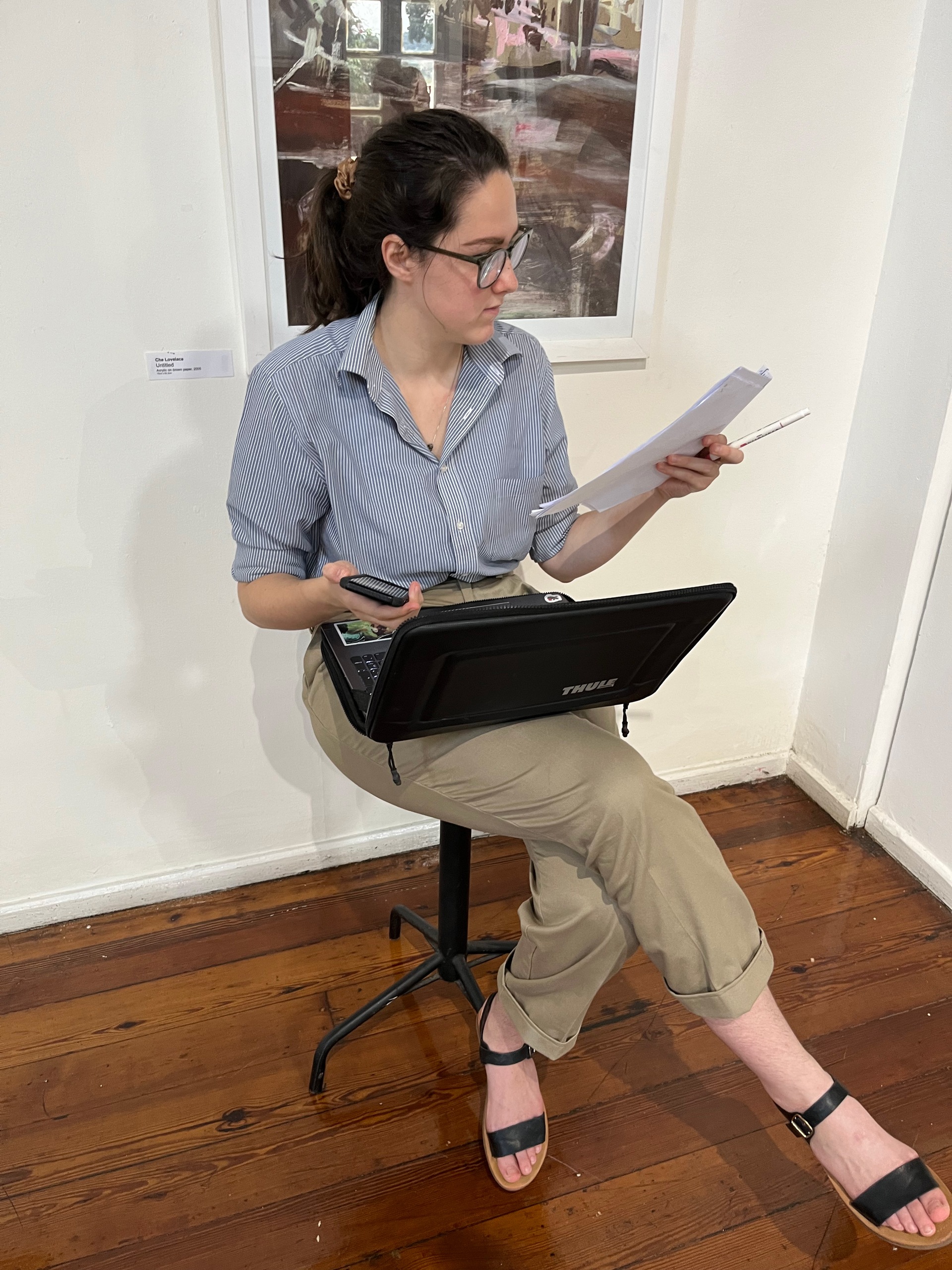
BGSU art students hailed as 'change agents' during internship at national art museum in Trinidad
Kate Bozzo and Raven Begell-Long’s work to affect the future care and record-keeping of the museum’s collections
By Laren Kowalczyk '07
Bowling Green State University art history students Kate Bozzo and Raven Begell-Long returned in August from a six-week internship in Trinidad, where they had a unique opportunity to work at the National Museum and Art Gallery of Trinidad and Tobago (NMAG).
The pair’s work is expected to significantly impact the future care and record-keeping of the museum’s collections, especially as NMAG closes temporarily for a long-awaited renovation.
“Kate and Raven were change agents in the truest sense of the term,” said Kenwyn Crichlow, chair of the NMAG Board. “In their short internship, they were advocates of change, doing new things, pushing ahead with ideas and practices and introducing digital procedures with an attitude that continues to inspire and influence ways of working at the National Museum and Art Gallery.”
Bozzo and Begell-Long were the first BGSU students to complete an internship at the museum, an experience coordinated by Crichlow and Dr. Rebecca L. Skinner Green, associate professor of African art and culture and art history in the School of Art in the College of Arts and Sciences at BGSU.

Before the trip, Bozzo was awarded the University's Center for Undergraduate Research and Scholarship (CURS) grant and Begell-Long, an Honors College student, received the Hoskins Global Scholar Program award, which helped fund travel and living expenses abroad.
A reaffirming experience
Although both students are majoring in art history, they’re pursuing two distinctly different areas within the field. Bozzo aspires to work in art conservation, and Begell-Long plans to focus on cataloging, library sciences and museum studies.
The internship provided Bozzo and Begell-Long with experience in their respective areas of interest, reaffirming they are following the right career paths.
“I basically had the opportunity to work as an on-site collection management specialist, and Kate was essentially the on-site conservator,” Begell-Long said. “We had the opportunity to work within our field in positions that are so applicable to what we want to do in the future. I am so unbelievably grateful and pleasantly surprised by how much freedom we had to do these different tasks and how much responsibility we were given.”
“The experience was amazing and life-changing,” Bozzo added. “We put 100% of ourselves into this project, even before we left for Trinidad. We created our projects, got funding and once we got there, we immediately started working with the museum staff and one another to begin the actualization of our projects."
Getting to work
The students arrived in Trinidad in early July. Bozzo created an accessioning system protocol for the museum, and then she and Begell-Long used that to assign unique identifiers to more than 850 pieces. Once that was complete, Bozzo began examining several works in the museum and writing condition reports.


She spent her days on the museum's second floor, carefully analyzing the condition of paintings, drawings, watercolors, ceramics and wooden sculptures. She photographed the items, removed dust and debris and used a magnifying glass and UV light to inspect the pieces.
“I had to physically interact with the piece to understand the condition of the object,” Bozzo said. “It’s an intensive and intimate process.”
In addition to writing condition reports, Bozzo monitored the temperature and relative humidity inside the museum and its storage facility in nearby San Fernando. She attributed much of the damage she observed to temperature and humidity fluctuations.
In her final report to the museum, Bozzo provided several recommendations, including installing UV protection on windows, limiting door opening and using humidifiers to help prevent future damage to its collections.
Begell-Long focused her efforts on implementing a system to transfer the museum's collections onto PastPerfect, a software system that will serve as the museum's comprehensive catalog of collections. The museum purchased the software nine years prior and didn't have available staff to implement it.
Using the accession numbers Bozzo created, Begell-Long added additional information, such as measurements and context from labels or the backside of pieces into the system. Inputting comprehensive data into PastPerfect provides the museum with consistent and easily accessible information on all its collections.


“Cataloging is a key component of managing any set of collections,” Begell-Long said. “Cataloging and moving institutions technologically into the present to make sure things are getting digitized and are more accessible to the public is incredibly important for museums and other memory institutions. It’s a big part of this idea of heritage: having the museum be less of a storehouse for goods and more of a space where works can be actively engaged with.”
Begell-Long couldn't transfer all the museum's collections into PastPerfect during the six weeks., so she developed a comprehensive manual for museum staff with instructions on how to continue doing so in her absence.
Paving the way
Skinner Green spent about three weeks in Trinidad with the students, helping to fully launch the internship and introducing them to contemporary artists and research team members with whom she works. The students utilized those connections throughout their time in Trinidad.
She said the students' work was crucial to the museum and helped pave the way for future BGSU students to experience a similar opportunity.
“They really made an impression on the museum,” she said. “They were not being treated as undergraduate interns. They were treated as colleagues. Everyone there recognized what they were bringing to the project, which helped move the museum forward.
“For two undergraduate students to set up the accession number system and documentation system for a national museum is really fantastic. They had to learn, be organized, prioritize and problem-solve. I don’t know if they realized how much problem-solving they would have to do, but their work ethic and aptitude were a perfect combination for what the museum needed.”
Related Stories
Media Contact | Michael Bratton | mbratto@bgsu.edu | 419-372-6349
Updated: 12/11/2024 03:11PM




